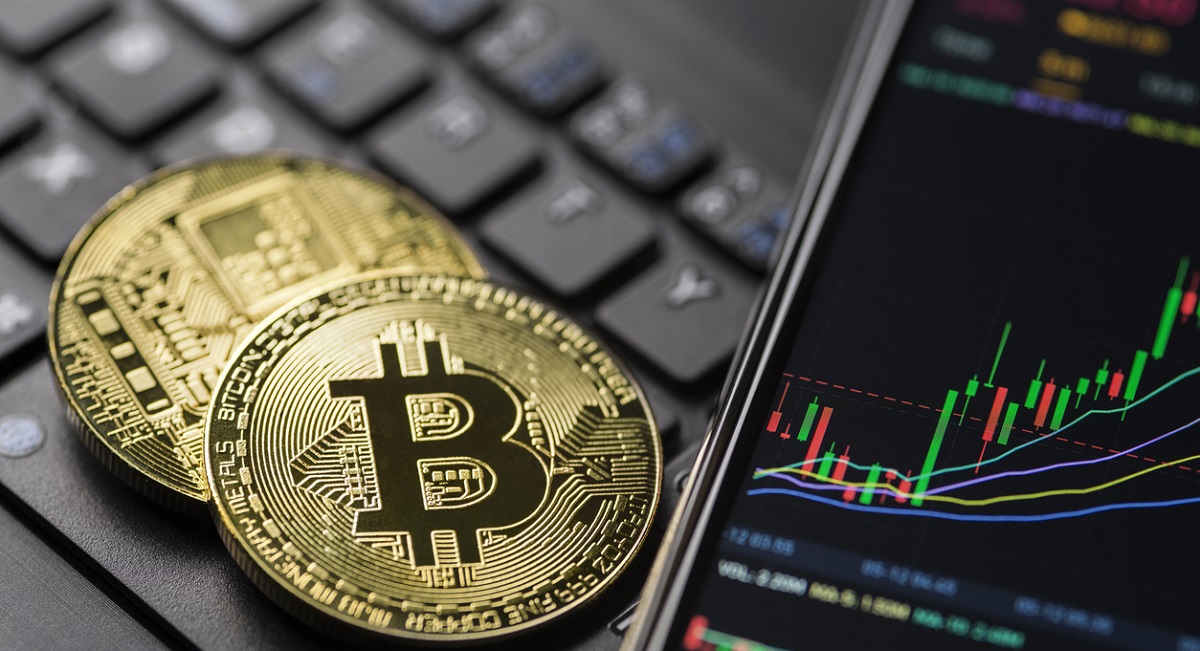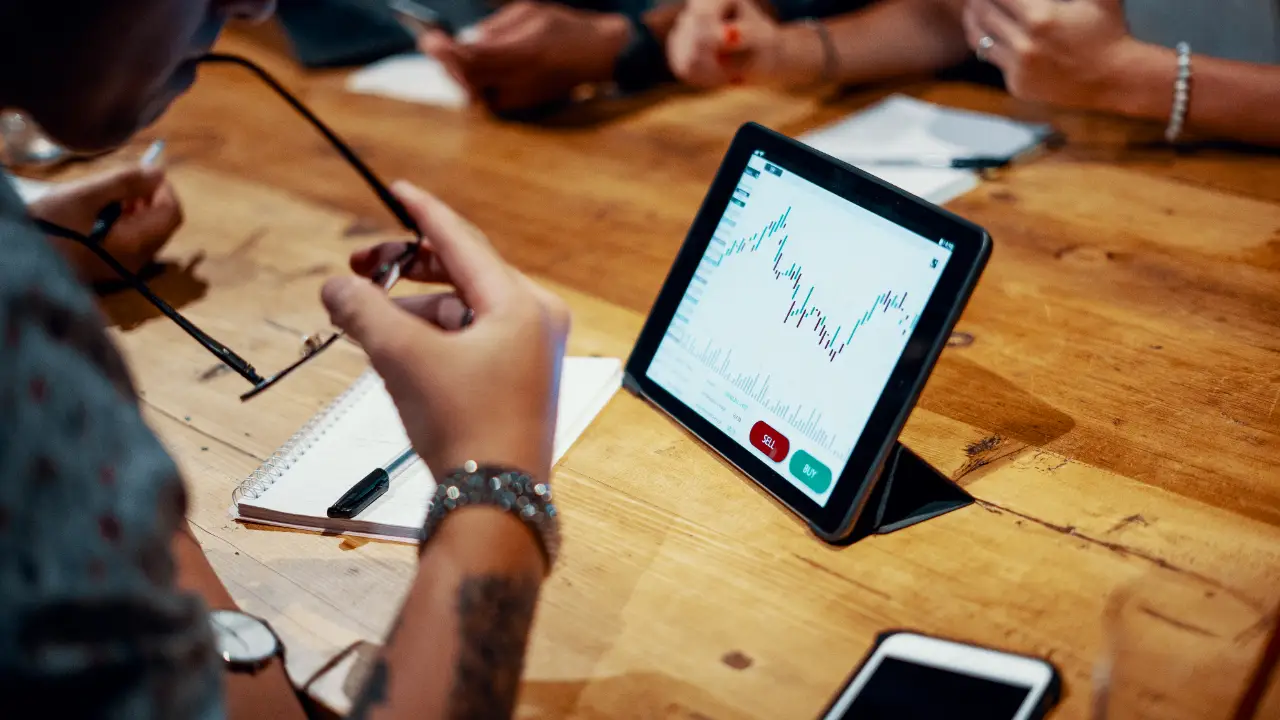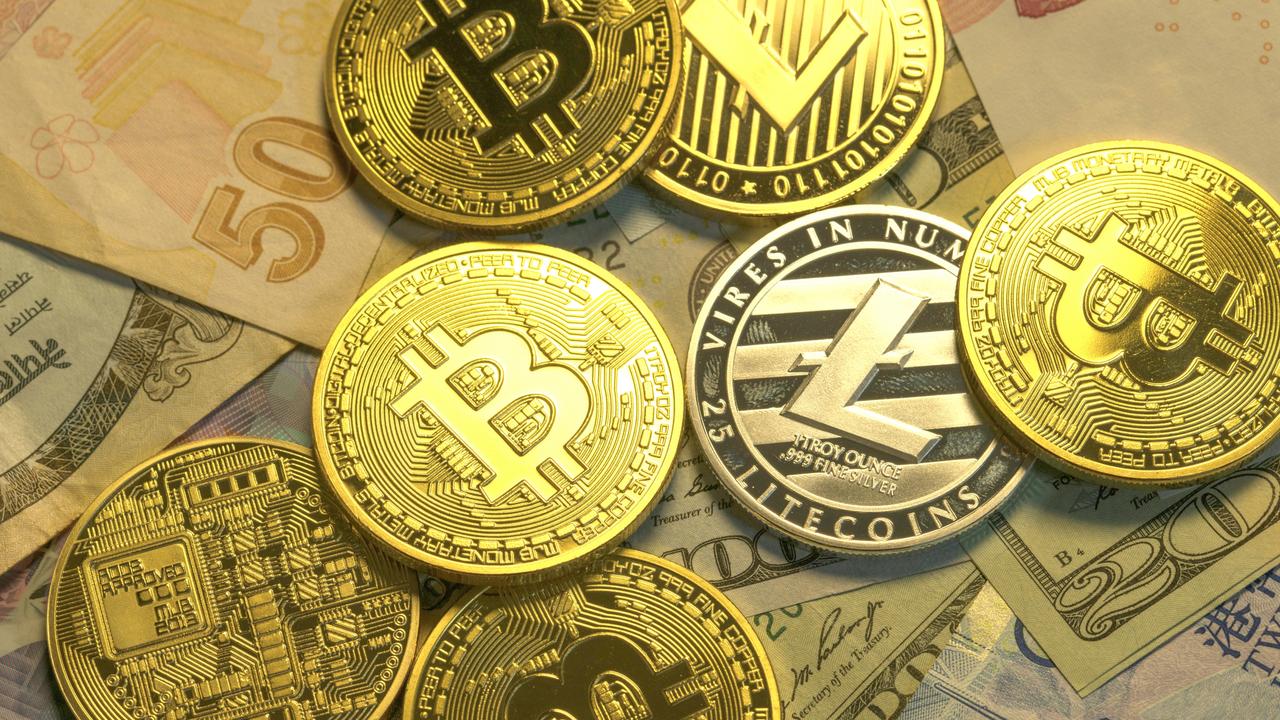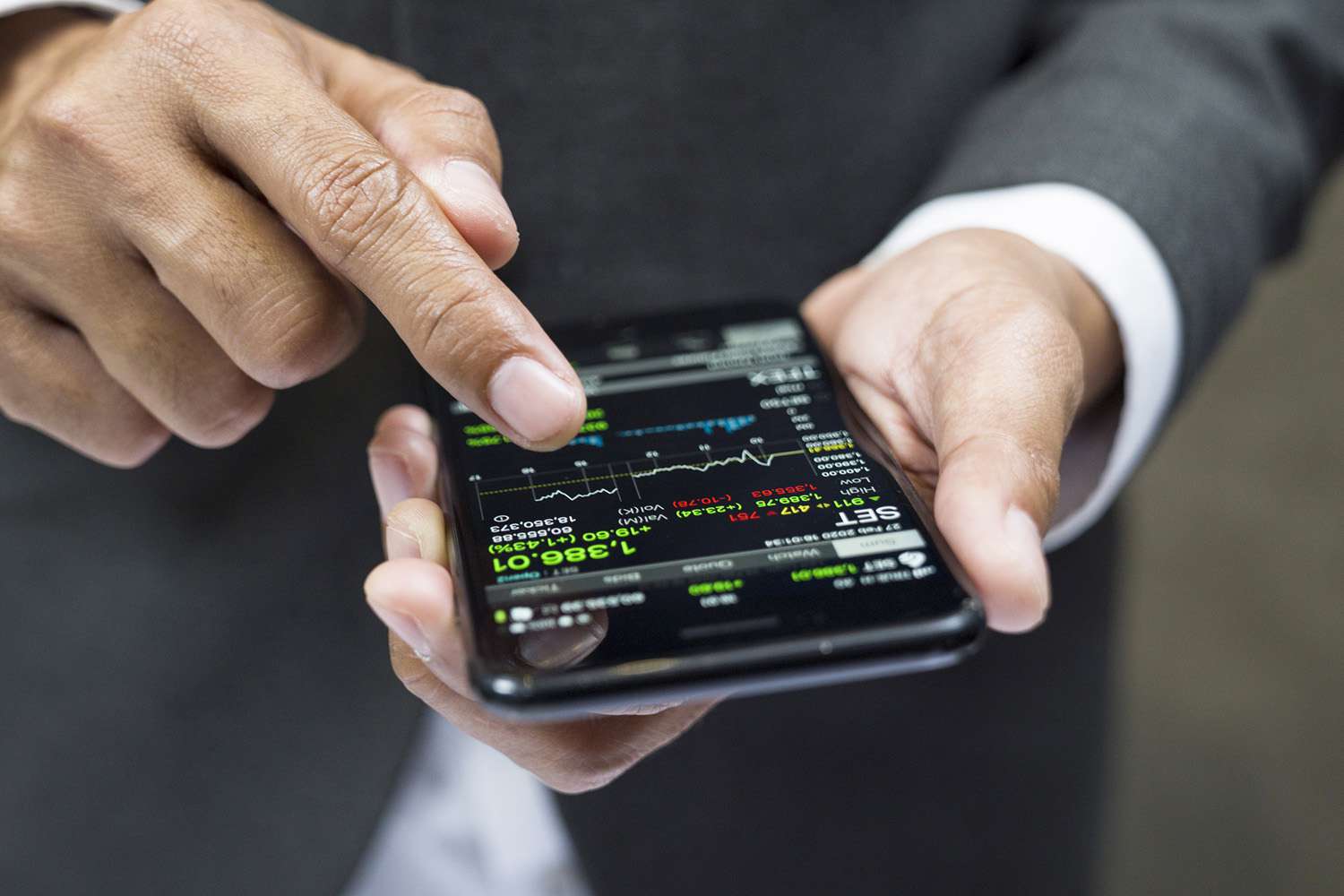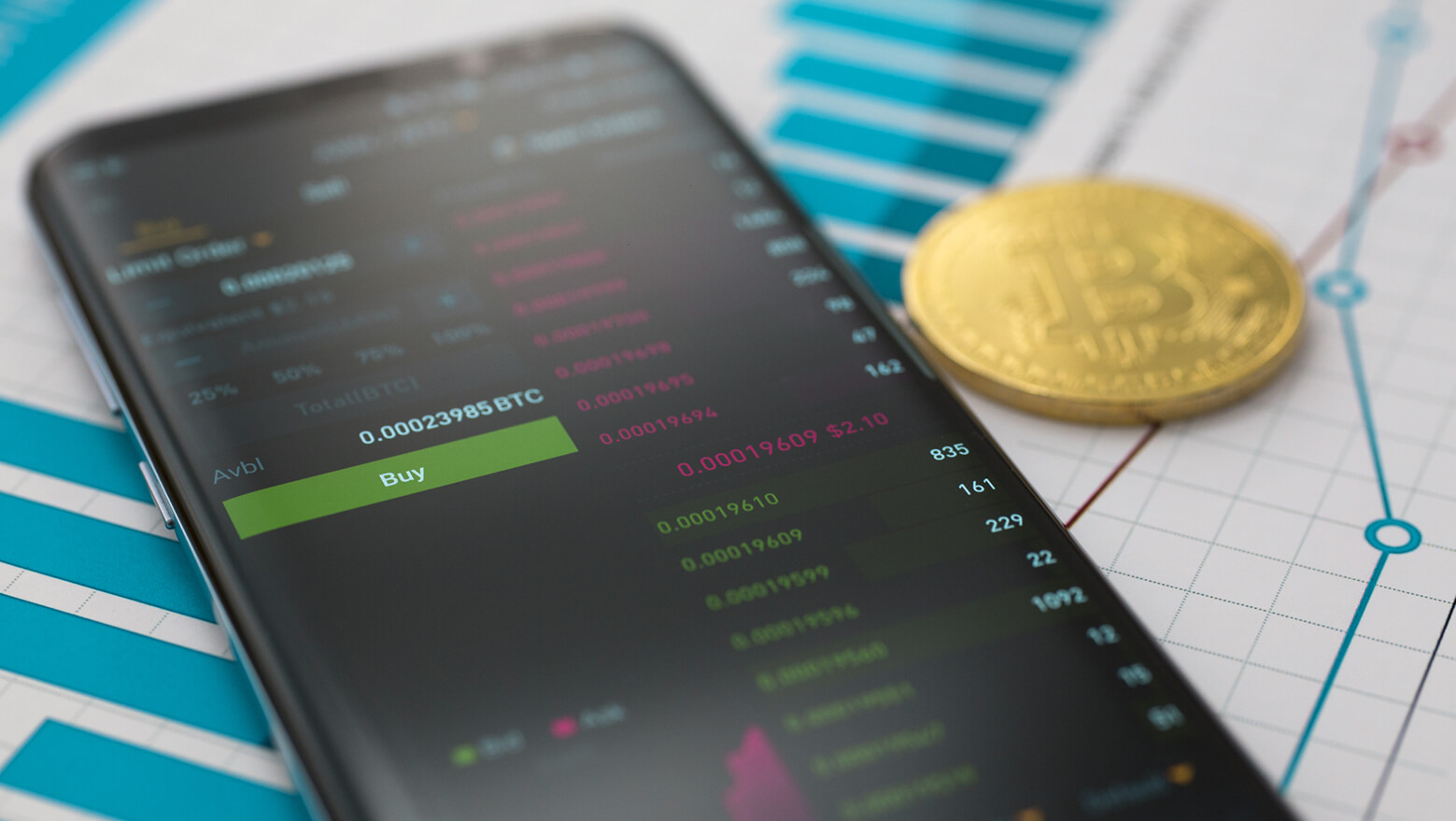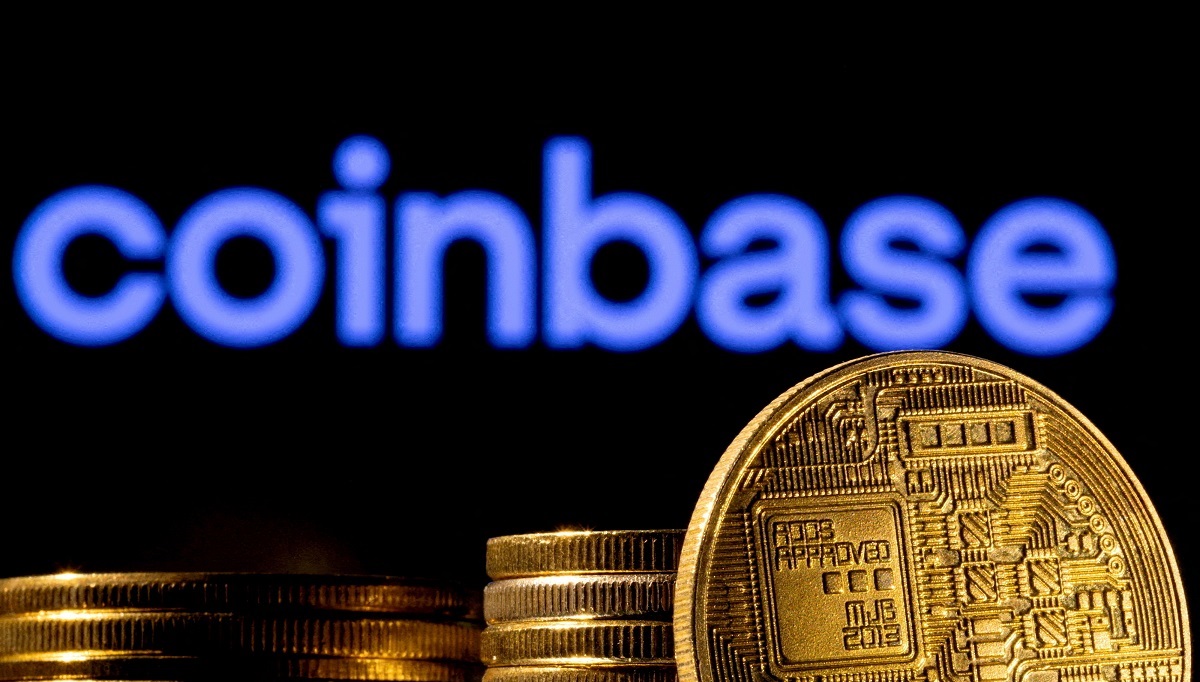Introduction
Welcome to the exciting world of digital currency trading! In recent years, digital currencies such as Bitcoin, Ethereum, and Litecoin have gained immense popularity and have become an attractive investment opportunity. Trading on digital currency exchanges allows individuals to buy, sell, and trade these cryptocurrencies to potentially profit from their price fluctuations.
However, navigating the world of digital currency trading can seem intimidating for beginners. This guide aims to provide you with a comprehensive overview of trading on digital currency exchanges, from understanding digital currencies to executing trades effectively. Whether you are a novice trader looking to get started or an experienced investor seeking to expand your cryptocurrency portfolio, this guide will equip you with the knowledge and tools necessary to engage in successful trading.
Before diving into the intricacies of trading, it is important to understand what digital currency is. Digital currency, often referred to as cryptocurrency, is a form of digital or virtual money that utilizes cryptography for secure financial transactions, control the creation of additional units, and verify the transfer of assets. The most famous digital currency is Bitcoin, but there are numerous other cryptocurrencies with varying features and potential.
Once you grasp the concept of digital currency, the next step is to choose a reliable digital currency exchange. These exchanges act as platforms where buyers and sellers can trade digital currencies. It is essential to select an exchange that is reputable, secure, and offers a range of cryptocurrencies to trade. Factors to consider when evaluating an exchange include its trading fees, liquidity, user interface, customer support, and security measures.
Creating an account on the chosen digital currency exchange is typically a straightforward process. You will need to provide personal information and go through a verification process to ensure compliance with Know Your Customer (KYC) and Anti-Money Laundering (AML) regulations. It is imperative to select a strong password and enable two-factor authentication to enhance the security of your account.
Now that you have an account set up, it is crucial to understand how to secure your interests while trading. Digital currency trading involves certain risks, including hacking attempts, price volatility, and exchange failures. Implementing security measures such as using hardware wallets, keeping software up to date, and being cautious of phishing attempts helps protect your digital assets.
Next, you will need to deposit funds into your trading account. Digital currency exchanges offer various deposit methods, including bank transfers, credit/debit cards, and sometimes even cryptocurrency deposits. Understanding the deposit process and any associated fees will ensure a seamless funding experience.
With funds in your account, it’s time to delve into the world of trading. Understanding market orders, buy and sell orders, stop-loss and take-profit orders, and the order book will enable you to execute trades effectively. Monitoring the market and being aware of price trends and trading volumes are key factors in making informed trading decisions.
Once you have successfully executed trades and made profits, you may want to withdraw funds from your trading account. Understanding the withdrawal process, including any withdrawal fees and withdrawal limits, is crucial to ensure a smooth and hassle-free withdrawal experience.
To optimize your trading journey, we have also gathered some valuable tips for successful trading. These tips include researching and staying informed, setting realistic goals, not investing more than you can afford to lose, diversifying your cryptocurrency portfolio, and learning from your trading experiences.
By following this guide and implementing these strategies, you will be well-equipped to engage in digital currency trading and potentially unlock lucrative opportunities in this dynamic and rapidly evolving market. So, let’s embark on this exciting trading journey and explore the world of digital currencies together.
Understanding Digital Currency
Before diving into the world of digital currency trading, it is essential to have a clear understanding of what digital currency is and how it functions. Digital currency, also known as cryptocurrency, is a form of digital or virtual money that utilizes cryptography for secure financial transactions, control the creation of additional units, and verify the transfer of assets.
One of the most well-known digital currencies is Bitcoin, which was introduced in 2009 by an anonymous person or group of people using the pseudonym Satoshi Nakamoto. Bitcoin operates on a decentralized network called blockchain, which is a digital ledger that records all transactional information in a transparent and immutable manner.
Unlike traditional fiat currencies issued by central banks, digital currencies are not controlled by any single entity. Instead, they rely on advanced cryptographic algorithms to ensure the security of transactions and maintain the integrity of the system. This decentralization and cryptographic nature make digital currencies resistant to censorship, tampering, and fraud.
Digital currencies have gained popularity due to several key features. Firstly, they offer a level of anonymity by allowing users to transact pseudonymously without revealing their real identities. Secondly, digital currencies provide fast and efficient cross-border transactions without the need for intermediaries such as banks or payment processors. This feature eliminates the need for extensive paperwork and reduces transaction costs.
Another characteristic of digital currencies is their limited supply. Most digital currencies are designed with a finite number of units that can ever be created. For example, Bitcoin has a maximum supply cap of 21 million coins, ensuring scarcity and potentially driving up its value over time. This limited supply creates a sense of digital scarcity and can serve as a hedge against inflation.
As the popularity of digital currencies continues to grow, numerous other cryptocurrencies have emerged, each with its unique features and potential use cases. Some of the prominent cryptocurrencies include Ethereum, Ripple, Litecoin, and many more. These cryptocurrencies offer different functionalities beyond being used as a medium of exchange, often incorporating smart contract capabilities and decentralized applications.
Understanding the basics of digital currencies is fundamental to participate in digital currency trading. It is important to stay updated with the latest news and developments in the digital currency space to make informed decisions while trading. By grasping the underlying concepts and potential applications of digital currencies, you will be well-equipped to navigate the dynamic and evolving landscape of digital currency trading.
Choosing a Digital Currency Exchange
When it comes to trading digital currencies, choosing the right digital currency exchange is crucial for a seamless and secure trading experience. A digital currency exchange is a platform that allows individuals to buy, sell, and trade cryptocurrencies. With the growing popularity of digital currencies, there are numerous exchanges to choose from, each offering its own set of features and services.
One of the first factors to consider when selecting a digital currency exchange is its reputation and reliability. Look for exchanges that have been operating for a considerable time period and have a strong track record of security and customer satisfaction. Research online reviews and forums to get insights into other traders’ experiences with different exchanges.
Another important consideration is the range of cryptocurrencies available on the exchange. While Bitcoin is the most widely known cryptocurrency, there are many other digital currencies with their own potential for growth and returns. Ensure that the exchange supports the cryptocurrencies you are interested in trading.
Trading fees are another crucial aspect to evaluate when choosing an exchange. Exchanges typically charge fees for each transaction, and these fees can vary widely between different platforms. Some exchanges may have a flat fee structure, while others may have a tiered fee system based on your trading volume. Consider your trading frequency and volume to determine which fee structure would be most cost-effective for your trading style.
Liquidity is an important factor to consider when evaluating an exchange. Liquidity refers to the ease with which you can buy or sell a cryptocurrency at a desired price. Exchanges with high liquidity usually have a larger number of active traders, providing sufficient trading volume and tighter bid-ask spreads. Higher liquidity ensures that you can execute trades quickly and at competitive prices.
User interface and user experience are also significant considerations. A well-designed and intuitive interface can enhance your trading experience, making it easier to navigate the platform, place orders, and monitor your trades. Look for exchanges that provide a user-friendly interface and offer advanced trading features such as real-time charts, order books, and customizable trading indicators.
Customer support is another crucial aspect to consider, especially if you are new to digital currency trading. Look for exchanges that offer responsive and helpful customer support to address any issues or queries you may have. Reliable customer support can make a significant difference in resolving technical difficulties and providing guidance during your trading journey.
Lastly, security should be a top priority when selecting an exchange. Look for exchanges that have strong security measures in place, such as two-factor authentication (2FA), cold storage for funds, and regular security audits. Additionally, check whether the exchange has a history of hacks or security breaches, as this can be a red flag.
By carefully considering these factors and conducting thorough research, you can choose a digital currency exchange that aligns with your trading needs and provides a secure and user-friendly trading environment. Remember, the right exchange can significantly impact your trading experience and potentially contribute to your success in the digital currency markets.
Creating an Account
Once you have chosen a digital currency exchange, the next step is to create an account. The account creation process may vary slightly between exchanges, but it generally involves a few common steps. Creating an account is crucial as it allows you to deposit funds, execute trades, and access various features offered by the exchange.
The first step in creating an account is visiting the website of the chosen digital currency exchange. Look for a “Sign Up” or “Register” button to initiate the account creation process. Clicking on this button will typically redirect you to a registration page where you will be required to provide some personal information.
The personal information required during the account creation process may include items such as your full name, email address, and in some cases, a phone number. Some exchanges may also require identity verification, where you will need to provide additional documents such as a copy of your passport or driver’s license and proof of address.
It is essential to provide accurate and up-to-date information during the registration process as any discrepancies may result in delays or account restrictions. The exchange needs this information to comply with Know Your Customer (KYC) and Anti-Money Laundering (AML) regulations.
During the account creation process, you will also be required to choose a strong password. It is crucial to select a password that is unique and not used for any other online accounts. A strong password typically includes a combination of upper and lower case letters, numbers, and special characters. This password will help secure your account from unauthorized access.
In addition to a strong password, enabling two-factor authentication (2FA) adds an extra layer of security to your account. Two-factor authentication typically requires you to enter a unique code generated by an app on your smartphone in addition to your password. This code changes every few minutes, making it difficult for hackers to gain access to your account. Enabling 2FA can significantly enhance the security of your trading account.
After providing the necessary information and setting up your account credentials, you will typically receive a verification email. This email will contain a link that you need to click in order to verify your email address. Verifying your email address is crucial as it confirms the ownership of the email account and allows you to receive important communication from the exchange.
Once you have successfully completed the account creation process, you will have access to your trading account. It is recommended to explore the exchange’s settings and account options to familiarize yourself with the platform’s features. Take some time to understand the layout, navigation, and available tools provided by the exchange.
Remember to keep your login credentials secure and never share them with anyone. This will help prevent unauthorized access to your account and protect your funds. Regularly monitor your account for any suspicious activities and report any concerns to the exchange’s customer support team.
By following these steps and providing accurate information, setting a strong password, and enabling two-factor authentication, you can create a secure and reliable trading account on your chosen digital currency exchange. This account will serve as your gateway to the world of digital currency trading, allowing you to deposit funds and commence your trading journey.
Securing Your Interests
When it comes to digital currency trading, security should be a top priority. The decentralized and digital nature of cryptocurrencies makes them an attractive target for hackers and scammers. It is crucial to take proactive measures to secure your interests and protect your digital assets. By implementing the following security practices, you can minimize the risks associated with digital currency trading.
1. Use Hardware Wallets: Consider using a hardware wallet to store your digital currencies. Hardware wallets are physical devices that store your private keys offline, reducing the risk of hacking and unauthorized access. These wallets add an extra layer of security and are considered one of the safest ways to store digital assets.
2. Keep Software Up to Date: Ensure that your computer or mobile device’s operating system, web browsers, and security software are up to date. Regularly installing updates and patches helps protect against potential vulnerabilities and security threats.
3. Be Cautious of Phishing Attempts: Be vigilant of phishing attempts that aim to trick you into revealing your login credentials or personal information. Be wary of suspicious emails, messages, or links that ask for your sensitive information. Always double-check the URL before entering login details and avoid clicking on links from untrusted sources.
4. Enable Two-Factor Authentication (2FA): Two-factor authentication adds an extra layer of security to your trading account by requiring a unique code generated by an app on your smartphone in addition to your password. This code changes every few minutes, making it difficult for hackers to gain access to your account even if they have your password.
5. Set Strong and Unique Passwords: Use a strong and unique password for your trading account. Include a combination of upper and lower case letters, numbers, and special characters. Avoid using easily guessable passwords or reusing passwords from other accounts.
6. Use Secure Internet Connections: Only access your trading account on secure and trusted internet connections. Avoid using public Wi-Fi networks or insecure connections as they may put your account and personal information at risk. Consider using a virtual private network (VPN) for added security when accessing your account remotely.
7. Be Cautious of Third-Party Applications: Be cautious when granting access to third-party applications that request permission to interact with your trading account. Ensure that these applications are from reputable sources and have a legitimate need for accessing your account information.
8. Regularly Monitor Your Account: Regularly review your account activity and transaction history. Report any suspicious activities or unauthorized transactions to the exchange’s customer support immediately. Being proactive in monitoring your account can help identify and prevent potential security breaches.
9. Diversify Your Holdings: Consider diversifying your digital currency holdings across different wallets and exchanges. This reduces the risk of losing all your assets in case of a security breach or exchange hack.
10. Educate Yourself: Stay informed about the latest security best practices and developments in the digital currency space. Participate in online forums, follow reputable news sources, and engage in discussions with experienced traders to enhance your knowledge and understanding of digital currency security.
By following these security practices, you can significantly reduce the risks associated with digital currency trading. Remember, security is an ongoing endeavor, and it is important to stay vigilant and adapt to changes in the security landscape. Always prioritize the protection of your digital assets to ensure a safe and secure trading experience.
Depositing Funds
Once you have created an account on a digital currency exchange, the next step before you can start trading is to deposit funds into your account. Depositing funds allows you to have a balance that you can use to buy or sell digital currencies on the exchange. The process of depositing funds may vary slightly depending on the exchange, but there are some common steps and considerations to keep in mind.
1. Choose the Deposit Method: Digital currency exchanges typically offer various deposit methods, including bank transfers, credit/debit cards, and sometimes even cryptocurrency deposits. Evaluate the available options and choose the one that is most convenient and cost-effective for you. Keep in mind that different deposit methods may have varying processing times and associated fees.
2. Verify Deposit Requirements: Some exchanges may have specific requirements for depositing funds. For example, they may only accept deposits from specific countries or require additional verification for certain deposit amounts. Make sure to review the exchange’s deposit requirements and ensure that you meet them to avoid any potential deposit issues.
3. Generate Deposit Address: If you are depositing cryptocurrency, the exchange will provide you with a unique deposit address. This address is like your account number, and it is specific to the cryptocurrency you are depositing. Make sure to copy the correct deposit address as incorrectly inputting the address can result in the loss of your funds.
4. Initiate the Deposit: Once you have chosen the deposit method and have the necessary details, initiate the deposit according to the exchange’s instructions. For bank transfers, follow the provided banking details and initiate the transfer from your bank account. For credit/debit card deposits, enter the required card information and follow the prompts to complete the deposit process.
5. Wait for Confirmation: After initiating the deposit, it may take some time for the funds to appear in your trading account. The processing time can vary depending on the deposit method and the exchange’s verification procedures. Some deposits may be processed almost instantly, while others may take several hours or even a few business days.
6. Monitor the Deposit Status: While waiting for the funds to be credited to your account, you can monitor the deposit status on the exchange’s platform. Most exchanges provide a deposit history or transaction section where you can track the status of your deposit. This allows you to ensure that the funds have been successfully received and credited to your account.
7. Consider Deposit Fees: It is important to be aware of any deposit fees that may be associated with the chosen deposit method. Exchanges may charge a flat fee or a percentage-based fee for deposits. Take these fees into account when deciding on the amount of funds to deposit and evaluate the overall cost-effectiveness of the deposit method.
8. Keep Deposit Records: It is a good practice to keep records of your deposit transactions, including transaction IDs, deposit amounts, and timestamps. These records can be helpful for future reference and for resolving any issues that may arise regarding your deposits.
By following these steps and considerations, you can deposit funds into your trading account on a digital currency exchange and have a balance ready for trading. Stay patient during the deposit process, and always double-check the deposit details to avoid any potential errors. Once the funds are credited to your account, you are ready to explore the exciting world of digital currency trading.
Understanding Market Orders
In digital currency trading, market orders play a vital role in executing buy or sell transactions quickly and efficiently. A market order is a type of order that is executed immediately at the current market price. Understanding how market orders work is essential for executing trades effectively and taking advantage of price movements in the market.
When placing a market order, you are essentially instructing the exchange to buy or sell a specific quantity of a digital currency at the best available price in the market. The price at which the order is executed will depend on the current supply and demand dynamics of the market. A market order ensures a high probability of immediate execution, but it does not guarantee a specific price.
Market orders are particularly useful when you want to enter or exit a trade quickly or when you are more focused on the execution speed rather than achieving a specific price level. Market orders are also commonly used during periods of high volatility when prices can fluctuate rapidly.
It is important to note that the execution price of a market order may slightly differ from the last traded price due to market fluctuations. This difference is known as slippage and occurs when there is insufficient liquidity or a sudden change in market conditions. Slippage can either work in your favor or against you, resulting in a better or worse execution price than anticipated.
When placing a market order, you will need to specify the quantity of the digital currency you want to buy or sell. The exchange will execute the order according to the current market conditions and available liquidity. The execution of a market order is typically quick, and the executed trade will appear in your account balance almost instantly.
It is important to exercise caution when placing market orders, especially during times of high volatility. Rapid price movements in the market can result in significant price gaps between the displayed price and the executed price of your order. This can potentially lead to larger losses or gains than anticipated.
To mitigate the risks associated with market orders, it is advisable to set appropriate stop-loss and take-profit levels. A stop-loss order allows you to set a predetermined price level at which your position will be automatically sold to limit potential losses. On the other hand, a take-profit order enables you to set a specific price level at which your position will be automatically sold to secure potential profits.
Understanding market orders is crucial for executing trades efficiently and taking advantage of market opportunities. By utilizing market orders appropriately and being aware of the potential risks, you can navigate the dynamic digital currency markets and make informed trading decisions.
Placing Buy and Sell Orders
Placing buy and sell orders is the primary way to participate in digital currency trading and take advantage of price movements in the market. By placing these orders, you can enter or exit positions and potentially profit from changes in the value of digital currencies. Understanding how to place buy and sell orders is essential for effectively executing trades.
When placing a buy order, you are expressing your intention to purchase a specific quantity of a digital currency at a desired price. The price you are willing to pay for the digital currency is referred to as the bid price. The bid price represents the highest price at which you are willing to buy the asset.
On the other hand, when placing a sell order, you are indicating your intention to sell a specific quantity of a digital currency at a desired price. The price at which you want to sell the digital currency is known as the ask price. The ask price represents the lowest price at which you are willing to sell the asset.
When placing buy and sell orders, it is important to consider the current market conditions and the prevailing bid and ask prices. The bid and ask prices, together with the order book, which displays the current buy and sell orders for a specific digital currency, provide insight into market sentiment and liquidity levels.
If you want your buy order to be executed immediately, you can match the ask price from an existing sell order in the order book. This results in a trade where you buy the digital currency at the ask price offered by the seller. Conversely, if you want to sell your digital currency quickly, you can match the bid price from an existing buy order in the order book.
If you are not in a hurry to execute the trade and are looking for a specific price, you can place a limit order. A limit order allows you to specify the exact price at which you want to buy or sell the digital currency. Your order will be added to the order book, and it will be executed when the trading price reaches your specified limit price.
It is worth noting that when placing limit orders, there is a possibility that your order may not be filled immediately if the market does not reach your specified limit price. The order may remain open until the price moves in your favor or you adjust your order accordingly.
Placing buy and sell orders requires careful consideration of the market conditions, your trading strategy, and your risk tolerance. It is important to conduct thorough analysis and research to inform your decisions. Additionally, utilizing tools such as real-time market data, technical analysis indicators, and fundamental analysis can provide valuable insights for placing accurate buy and sell orders.
By understanding how to place buy and sell orders effectively, you can participate in digital currency trading with greater precision and potentially capitalize on market opportunities.
Setting Stop-Loss and Take-Profit Orders
Setting stop-loss and take-profit orders is an essential risk management strategy in digital currency trading. These orders allow you to automate the process of selling your digital currencies at a predetermined price level to limit potential losses or secure profits. Understanding how to set stop-loss and take-profit orders can help protect your trading capital and ensure disciplined decision-making.
A stop-loss order is designed to limit losses by automatically selling your digital currency position when it reaches a specific price level. By setting a stop-loss order, you can define the maximum amount of loss you are willing to tolerate for a particular trade. When the market price reaches or falls below the stop-loss price, the stop-loss order is triggered, and your position is automatically sold.
Setting an appropriate stop-loss level is crucial to protect your capital and manage risk. It requires careful analysis of market trends, support and resistance levels, and your risk appetite. Placing the stop-loss too close to the entry price may result in premature selling due to minor price fluctuations, while placing it too far may lead to significant losses if the market moves against your position.
On the other hand, a take-profit order enables you to lock in profits by automatically selling your digital currency position when it reaches a specific price level. By setting a take-profit order, you can secure your desired level of profit without constantly monitoring the market. When the market price reaches or surpasses the take-profit price, the take-profit order is triggered, and your position is automatically sold.
Similar to setting stop-loss orders, determining an appropriate take-profit level requires analysis and consideration of market conditions and your trading strategy. It is important to strike a balance between setting a take-profit level that allows you to capture a reasonable profit and not being too greedy, as the market can reverse quickly.
When setting stop-loss and take-profit levels, it is also essential to consider the volatility of the digital currency market. Volatile markets may experience price fluctuations that can trigger stop-loss orders more frequently. It is crucial to set stop-loss levels that provide enough room for the price to fluctuate within your risk tolerance while still protecting your capital.
It is important to note that stop-loss and take-profit orders are not foolproof. In highly volatile markets or during major news events, there can be slippage, where the executed price deviates from the specified stop-loss or take-profit price. Slippage can occur due to rapid market movements or insufficient liquidity. Therefore, it is important to be aware of these risks and set your orders accordingly.
By incorporating stop-loss and take-profit orders into your trading strategy, you can effectively manage your risk and protect your capital. These orders provide you with a disciplined approach to trading, ensuring that you have a pre-defined exit strategy. Remember to regularly review and adjust your stop-loss and take-profit levels based on market conditions and your trading objectives.
Monitoring Your Trades
Monitoring your trades is a crucial aspect of digital currency trading that allows you to stay informed, make timely decisions, and maximize your trading results. By actively monitoring your trades, you can assess market conditions, identify potential opportunities or risks, and make necessary adjustments to your trading strategy. Here are some key points to consider when monitoring your trades:
1. Market Analysis: Regularly analyze the market conditions and monitor price movements of the digital currency you are trading. Utilize technical analysis tools, such as charts and indicators, to identify trends, support and resistance levels, and patterns that can help inform your trading decisions.
2. Stay Informed: Stay updated with the latest news and developments in the digital currency space. Significant news events, regulatory announcements, or market trends can have a significant impact on the price and volatility of digital currencies. Utilize reputable news sources, forums, and social media platforms to gain insights and stay informed.
3. Set Alerts: Utilize the alert features provided by your trading platform or utilize third-party applications that can notify you when price or market conditions reach certain levels. Setting alerts for specific price levels or technical indicators can help you stay on top of the market movements, even while you are away from your trading platform.
4. Review Trading Strategies: Regularly review and evaluate your trading strategies. Assess the effectiveness of different strategies and indicators you are using and make adjustments accordingly. Keep a record of your trades, including entry and exit points, to analyze your performance and identify areas for improvement.
5. Risk Management: Continuously evaluate and manage the risk associated with your trades. Assess the size of your positions, set appropriate stop-loss and take-profit levels, and consider your risk tolerance. Adjust risk parameters as necessary to protect your capital and maintain a disciplined approach to trading.
6. Evaluate Trade Progress: Monitor the progress of your trades relative to your trading plan. Assess whether the market conditions and technical indicators are aligning with your initial trade analysis and objectives. If necessary, make adjustments to your exit strategy or consider closing a trade if it no longer meets your expectations.
7. Be Mindful of Emotional Reactions: Emotions can play a significant role in trading decisions. Be aware of any emotional reactions you may have, such as fear or greed, and exercise discipline in your trading approach. Avoid making impulsive decisions based on short-term market fluctuations.
8. Utilize Trading Tools: Take advantage of the various trading tools offered by your trading platform, such as advanced order types, real-time market data, and trading indicators. These tools can provide valuable insights and help you make more informed trading decisions.
9. Seek Opportunities for Growth: Continuously seek opportunities to enhance your trading skills and knowledge. Engage with experienced traders, participate in educational webinars or courses, and stay updated with the latest industry trends and trading strategies. Constant learning can help you adapt to changing market conditions and improve your trading performance.
10. Practice Patience and Discipline: Ultimately, successful trading requires patience and discipline. Avoid the temptation to continuously monitor and intervene in your trades based on short-term market fluctuations. Stick to your trading plan, trust your analysis, and be patient for your trades to play out.
By actively monitoring your trades and staying informed about market conditions, you can make more informed decisions, adapt to changing market dynamics, and potentially improve your trading outcomes. Remember that monitoring your trades is an ongoing process, and regularly reviewing and adjusting your strategies will help you stay ahead in the dynamic world of digital currency trading.
Withdrawing Funds
Withdrawing funds from your digital currency exchange account allows you to transfer your profits or assets to your personal wallet or bank account. Understanding the process of withdrawing funds is crucial for managing your trading profits and ensuring easy access to your funds. Here are the key points to consider when withdrawing funds from your digital currency exchange:
1. Know the Withdrawal Policy: Familiarize yourself with the withdrawal policy of your chosen digital currency exchange. Each exchange may have specific requirements, procedures, and limitations for withdrawing funds. Ensure that you meet the minimum withdrawal threshold and any other stipulated requirements to proceed with the withdrawal.
2. Verify Your Account: Before initiating a withdrawal, it is common for exchanges to require account verification. This verification process usually involves submitting identification documents to comply with regulatory standards and prevent fraud. Ensure that your account has been fully verified to avoid any delays or issues when withdrawing funds.
3. Choose the Withdrawal Method: Digital currency exchanges typically offer various withdrawal methods, such as bank transfers, cryptocurrency transfers, or payment processors. Select the method that is most convenient and cost-effective for you. Consider factors such as withdrawal fees, processing times, and whether you want to convert your digital currency to fiat currency or keep it in cryptocurrency form.
4. Review Withdrawal Fees and Limits: Be aware of any withdrawal fees associated with your chosen withdrawal method. Exchanges may impose a flat fee or a percentage-based fee for each withdrawal transaction. Additionally, take note of any withdrawal limits or restrictions in place, especially if you are planning to withdraw large amounts of funds.
5. Initiate the Withdrawal: Once you have chosen the withdrawal method and accounted for any applicable fees, initiate the withdrawal process on the exchange’s platform. Provide the necessary information, such as your wallet address or bank account details, based on the chosen withdrawal method.
6. Double-Check the Withdrawal Details: Before finalizing the withdrawal, carefully review and double-check all the withdrawal details, including the recipient address or account number. Ensure the accuracy of the information to avoid any potential errors or loss of funds. Mistakenly sending funds to the wrong address or account can be irreversible.
7. Wait for Confirmation: After initiating the withdrawal, the exchange will process your request based on its withdrawal processing times. Processing times can vary depending on factors such as withdrawal method, volume of withdrawals, and security protocols. Be patient and wait for the confirmation or notification from the exchange that the withdrawal has been successful.
8. Keep Records of Withdrawals: It is essential to maintain records of your withdrawal transactions, including transaction IDs, withdrawal amounts, and dates. These records can be useful for future reference, tax purposes, and for resolving any issues that may arise regarding your withdrawals.
9. Ensure Security: While the exchange takes measures to secure the withdrawal process, it is recommended that you maintain a high level of security on your end as well. Secure your personal wallets or bank accounts with strong passwords and enable additional security measures, such as two-factor authentication, to safeguard your funds and personal information.
10. Contact Customer Support if Needed: If you encounter any issues or have questions regarding your withdrawals, do not hesitate to reach out to the exchange’s customer support team. They can assist you with any concerns and provide guidance throughout the withdrawal process.
By understanding the process and following these guidelines, you can successfully withdraw funds from your digital currency exchange account. Always take precautions to ensure the accuracy of withdrawal details and maintain the security of your funds. Regularly review the withdrawal policies and fees of your chosen exchange to stay informed about any updates or changes that may affect your future withdrawals.
Tips for Successful Trading
Successful trading in the digital currency market requires a combination of knowledge, discipline, and strategic decision-making. Whether you are a beginner or an experienced trader, implementing the following tips can significantly improve your chances of success:
1. Educate Yourself: Continuously expand your knowledge and understanding of digital currencies, blockchain technology, and the dynamics of the market. Stay updated with the latest news, industry trends, and trading strategies. Engage in educational resources, webinars, courses, and interact with experienced traders to enhance your trading skills.
2. Set Realistic Goals: Establish realistic and achievable goals for your trading journey. Focus on consistent growth rather than chasing unsustainable profits. Breaking your goals into smaller, manageable targets can help you stay motivated and measure your progress effectively.
3. Manage Risk: Implement effective risk management strategies to protect your trading capital. Set appropriate stop-loss and take-profit levels, diversify your portfolio, and avoid investing more than you can afford to lose. Use risk management tools such as position sizing and risk-reward ratios to maintain a disciplined approach to trading.
4. Follow a Trading Plan: Develop a well-defined trading plan that outlines your trading strategy, entry and exit rules, risk management guidelines, and money management principles. Stick to your plan and avoid making impulsive decisions based on emotions or short-term market fluctuations.
5. Practice Patience: Trading requires patience and discipline. Avoid rushing into trades based on FOMO (Fear Of Missing Out) and take time to analyze the market and wait for favorable conditions. Be patient for your trades to play out, and avoid constantly checking the market or making unnecessary adjustments to your positions.
6. Use Technical and Fundamental Analysis: Utilize a combination of technical and fundamental analysis when evaluating potential trades. Technical analysis involves studying charts, patterns, and indicators to identify emerging trends and potential entry or exit points. Fundamental analysis involves analyzing news, market sentiment, and the underlying value of digital currencies to assess long-term prospects.
7. Control Emotions: Emotions can impact trading decisions. Avoid being driven by fear or greed, and instead, make rational decisions based on your analysis and trading plan. Emotional trading can lead to impulsive actions and poor outcomes.
8. Paper Trade or Use Demo Accounts: If you are a beginner, consider using paper trading or demo accounts to practice your trading strategies without risking real money. This allows you to refine your skills, test different approaches, and gain confidence before trading with actual funds.
9. Learn from Mistakes: It is inevitable to make mistakes in trading. Use your trading experiences, both successes, and failures, as learning opportunities. Analyze your trades, identify areas for improvement, and adjust your approach accordingly. Continuous learning and adaptation are key to long-term success in trading.
10. Keep Emotions and Trading Separate: Maintain a healthy work-life balance and avoid letting your trading activities consume your personal life. Separating emotions and trading helps you approach trading decisions objectively and prevents stress and burnout.
By implementing these tips, you can improve your trading skills, maintain discipline, and increase your chances of success in the digital currency market. Remember that consistent practice, ongoing education, and willingness to adapt are key factors in achieving long-term profitability.
Conclusion
Trading in the world of digital currencies can be an exciting and potentially profitable venture. However, it is essential to approach it with careful consideration, proper knowledge, and a disciplined mindset. Throughout this guide, we have explored various aspects of digital currency trading, from understanding what digital currencies are to placing buy and sell orders, securing your interests, and withdrawing funds.
To succeed in digital currency trading, it is crucial to continuously educate yourself about digital currencies, stay informed about market trends, and develop a solid trading plan. Implementing risk management strategies, utilizing technical and fundamental analysis, and maintaining emotional control are also essential aspects of successful trading.
Remember that digital currency markets can be volatile and unpredictable. There will be ups and downs along the way, and not every trade will result in profit. However, by adhering to the guidelines outlined in this guide and constantly reviewing and improving your trading skills, you can increase your chances of achieving long-term success in the digital currency trading arena.
Always keep in mind that trading involves risk, and you should only invest capital that you can afford to lose. It is important to conduct thorough research, seek guidance from reputable sources, and make well-informed decisions.
Lastly, the world of digital currency trading is constantly evolving, and staying adaptable and open to learning is crucial for sustained success. As you gain experience and become more familiar with the intricacies of digital currency markets, continue to expand your knowledge, stay informed about industry developments, and network with fellow traders to share insights and strategies.
Embark on your trading journey with a solid foundation, discipline, and the willingness to continue learning and adapting. With proper knowledge and the right mindset, digital currency trading can be a rewarding endeavor that unlocks exciting opportunities for financial growth and personal development.







